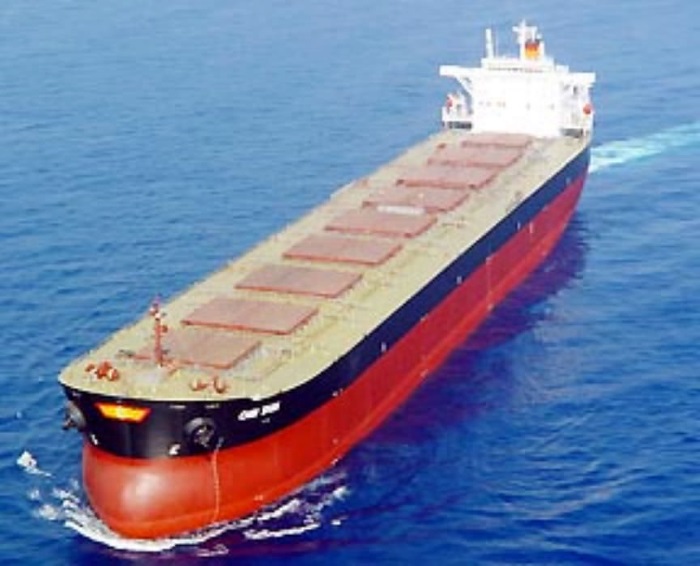In Dry Bulk Market,Hellenic Shipping News 16/03/2017

With the Baltic Dry Index (BDI) rebounding firmly and expectations abound that this is only the start of a new sustained recovery phase for the dry bulk market, ship owners are stocking up on new bulker acquisitions, in order to capitalize on the market’s rebound. In its latest weekly report, shipbroker Intermodal noted that “over the past two weeks, the Dry Baltic Index has been on an upward trend, breaking the 1000 point mark and creating a positive sentiment for the upcoming weeks. Generally, healthier freight rates have given a boost in sales, and from the beginning of the year 36 SnP deals are being fixed on average per week, with the majority of those being Bulk Carriers. In relation to the Capesize segment, the chart below compares the same dry indices of the last 8 years versus the underlying asset prices”.
According to Intermodal’s Research Analyst, Mr. George Panagopoulos, “it has become apparent that potential buyers can purchase a cape at fairly good levels compared to previous years when the BCI was in the same levels, hence so far so good! However, as iron ore is the main cargo for Capesize vessels, it is interesting to examine how the commodity has performed from the beginning of the year and what are the forecasts for 2017. Almost all commodities from the beginning of the year are on the high side with Iron Ore and other industrial metals being the prime gainers. The trade surplus is increasing and is on a positive trend, after the previous bad year. To put things into perspective, from December 2016 iron ore has made a full U-turn from the previous year’s devastating losses and has hit $US90/t, with Iron Ore prices doubling from the December 2014 prices, driven by the strong Chinese iron ore demand, which in turn has driven Cape rates above $12,000 per day. However, after a long rally in Iron Ore prices, there are signs of a reversal of the recent trend. Since Tuesday (7/03/2017), Iron Ore prices have continuously declined, raising concerns from many market analysts about the sustainability of a long-term upward trend. The main reason behind this decline is the flagging strength of demand in China at a time when iron ore stocks are continually rising. As a result, some analysts predict that the Iron Ore price will again fall to $US50/t by the end of the year. But can a ship-owner hedge against this risk?”, wondered Panagopoulos.
“To conclude, the Dry market is witnessing a positive market trend, yet analysts are prepared for the worst. In the wet market, it will be interesting to see the market reaction after the recent drop of crude oil prices below $50/bl. This is on the back of record U.S. inventories that have now completely wiped off the boost on prices that the OPEC production cut had caused”, Intermodal’s analyst concluded.
Meanwhile, in the S&P market this past week, Intermodal noted that the SnP activity might be slightly subdued with less reported sales than previous weeks. However, the market overall appears healthy, especially in dry tonnage, with the recent increase in asset prices across segments further supporting this. On the dry bulker side, we had the sale of the “INTREPID HARVESTER” (34,737dwt-blt 12, China), which was sold to Greek buyers, for a price in the region of $9.8million”, said the shipbroker.
Meanwhile, “with the Dry and Demo markets experiencing healthier rates lately, it is interesting to see how the troubled newbuilding industry will react. This week’s activity in the newbuilding market remained subdued, with less than a handful of orders surfacing last week, which is overall in line with the level of activity that has been experienced since the start of the year. Ordering activity in the Dry market will not be immediate, as some insecurity and conservativeness remains from last year, even if the market has recovered. As a result, NB prices have remained relatively stable (and should be noted that are on the lower side of historical prices), despite the market recovery. For Bulk Carriers, asset prices in the SnP market have started to increase. Dry ordering activity is worth keeping an eye on, especially as freight rates continue to increase, as owners who desire to opt for a dry bulk newbuilding vessel can still get access to finance with the help of shipbuilders, therefore a further increase can be anticipated. In terms of recently reported deals, Japanese owner, Shokuyu Tanker, placed an order, for one firm Tanker (3,000 dwt) at Dae Sun, S. Korea for an undisclosed price and delivery set in September in 2018”, Intermodal concluded.
